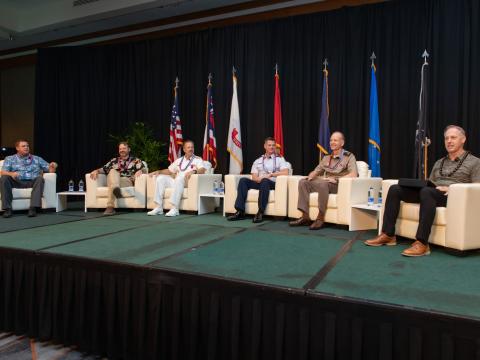Just How Important Is the Joint Information Environment (JIE)?
Anyone following the progress of the Joint Information Environment (JIE) knows by now that it is not a program of record. No one will see large procurements to provide the JIE. It definitely is a framework: it defines standards and architectures for consistency across the defense environment. It defines a core environment and interfaces for the connection of networks and systems to the core. The JIE leverages initiatives to consolidate networks and data centers, to establish enterprise services and to implement transitional technologies such as cloud implementations, mobility, security solutions, big data and analytics, and the Internet of everything. It is a coordinating effort, using existing and planned programs, contracts and initiatives to provide a common operating environment rather than start with new acquisitions.
It is important to understand the JIE extends well beyond the boundaries of defense. It provides the path for better information sharing with other federal, state, local and tribal networks and systems. It is vital to achieving interoperability and ease of information sharing along with security with U.S. coalition partners.
Recently, I was in Europe attending AFCEA TechNet International and NATO C4ISR Industry Days, which are fully integrated in a single program. Key to this conference is AFCEA’s partnership with the NATO Communications and Information (NCI) Agency. An important element of this conference was reporting on the state of development of the Federated Mission Network (FMN), an evolution of the Afghan Mission Network (AMN), the information sharing environment created in Afghanistan to support the International Security Assistance Force (ISAF). The FMN is intended to institutionalize the AMN experience to provide an adaptable framework for information sharing in future NATO engagements, whether combat or humanitarian assistance.
In a discussion with Koen Gijsbers, general manager of the NCI Agency, I asked how well he believes the FMN effort is coordinated with the JIE. He responded that considerable collaboration has taken place between the NCI Agency and the FMN initiative, as well as with the JIE leadership in the United States—the U.S. Defense Department chief information officer (CIO), the Defense Information Systems Agency (DISA) and the J-6 on the Joint Staff. And, this collaboration continues.
This aspect is particularly important because the United States almost always will operate in a coalition environment, and information sharing and security have to be as seamless as possible. Gijsbers also pointed out The MITRE Corporation is involved in supporting the dialogue and interface between the JIE and the FMN efforts.
So I spoke with Al Grasso, MITRE chief executive officer and chairman of the board of AFCEA International, about the JIE and the interface with FMN. Grasso reminded me the real proof of the effectiveness of the JIE—and, by extension, the FMN—will be at the operational level: in the combatant commands (COCOMs), in task forces tailored to specific missions and in coalitions. This is where all the pieces will come together to provide effective, secure information sharing—or not. It is important to point out that the initial JIE rollout is occurring through COCOMs—first in Europe, then in the Pacific. As Grasso pointed out, this will be the real test of the JIE.
So, how does the JIE affect members of the defense community? Anyone who is involved with the command, control, communications, computers, intelligence, surveillance and reconnaissance/information technology community either is contributing to the programs and initiatives that will be leveraged by the JIE or is being guided by the framework the JIE provides. This is complicated by the number of mission partners engaged with the JIE: the core players—the Defense Department CIO, DISA and the Joint Staff J-6—as well as each of the military services, the COCOMs, the defense agencies, the intelligence community and many nondefense partners.
To help this community affected by the JIE get its arms around this vital issue, AFCEA is presenting the JIE Mission Partners Symposium, May 12-14 at the Baltimore Convention Center. All of the JIE mission partners will be represented at the symposium. The theme is “Integrating and Exploiting Technology to Execute the Joint Mission.” Through plenary sessions, theaters and exhibits, attendees will be able to see the state of the JIE and what each of the mission partners is bringing to the collective environment. Anyone who is or will be touched by the JIE will want to be there.


Comment
The biggest challenge ...
For sure, effective information exchange is crucial for the success of combined missions. The challgenge is to create a data structure that actually is capable of enabling this exchange.
As far as I see it, the most appropriate approach is to estalish mission-specific data clouds that can be accessed by all mission partners. To go beyond the concept of a mere cloud-based storage, however, there is a need for a shared data structure and meta-data concept for all mission-relevant types of information. And this is also, imho, the most critical part.
JIE Mission Partners Symposium, May 12-14 at the Baltimore Conve
With TDY funds tight, will this event, especially the speaker sessions, be provided via Defense Collaboration Services (DCO), or other means to reach folks who are unable to travel, but who are or will be touched by the JIE, and need to have the content?
Thank you,
Danette Wile - DISA, Chambersburg, PA
717 267 9262 (office)
Comments